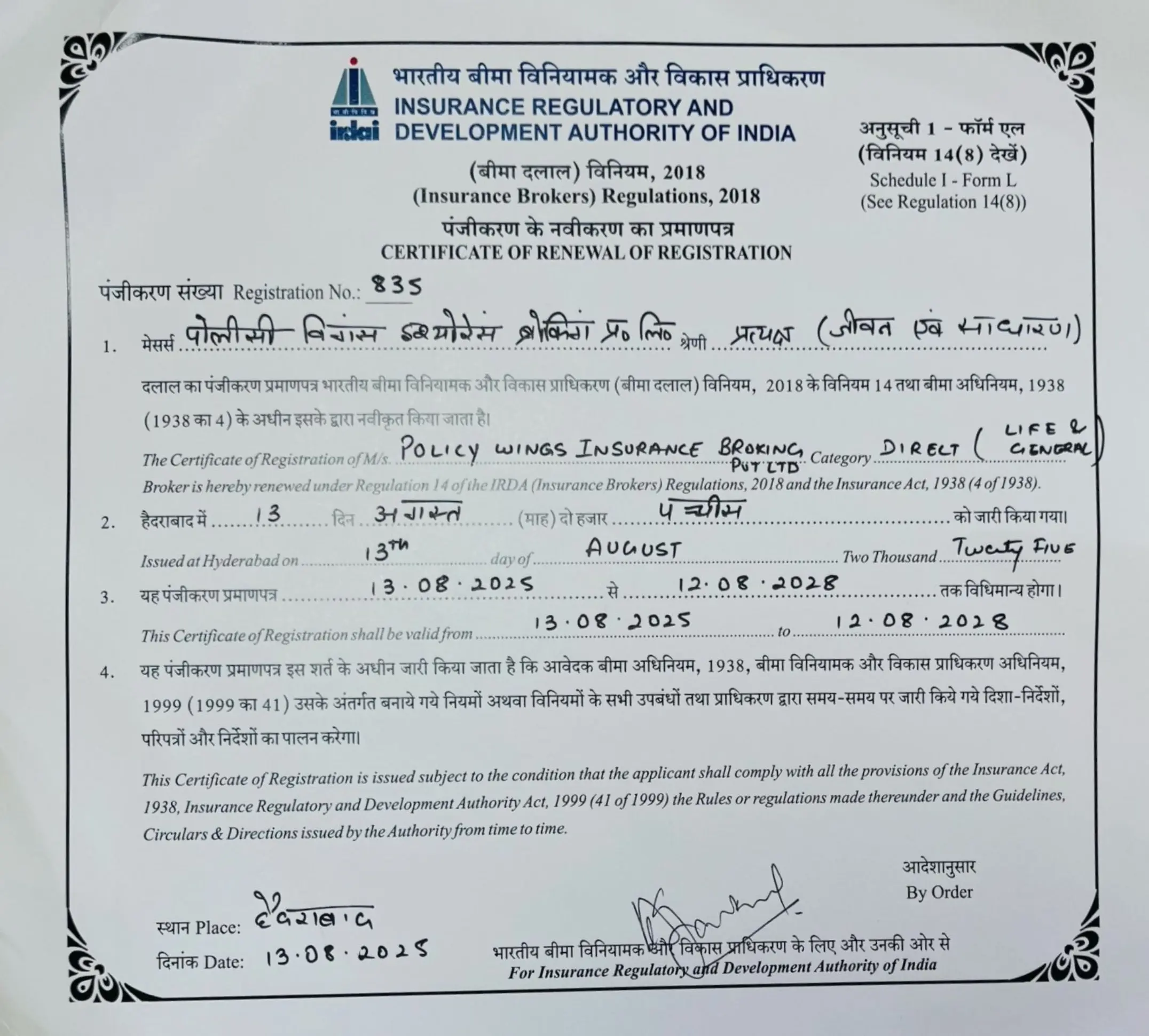Introduction
When planning your finances for retirement, saving is not the only thing, you also need to protect your future with the best term insurance plans. Term insurance for retirement is essentially a safety net to protect your loved ones from unforeseen circumstances. The plans, backed by IRDAI (Insurance Regulatory and Development Authority) term insurance regulations, can not only offer you peace of mind but also ensure you enjoy the term insurance tax benefits, as per Sections 80C and 10(10D).
Table of Contents
Toggle
Role of Term Insurance in Retirement Planning
Term insurance is a product whose premium payment is for a limited period of time which is known as the policy term. The main objective is to make sure that if the policyholder were to die prematurely, the nominee gets a financial payout that is large enough to take care of liabilities, expenses or any other important requirement without affecting the retirement corpus.
It becomes essential especially if the policyholder is the breadwinner of the family. Without term policy, their demise might upset current plans and put future retirement assets at risk. Including a term plan in your financial plan can allow your retirement goals to remain unaffected by contingencies.
Key Benefits to Retirement-Oriented Individuals
People often carry long-term debts like a home or education loan until their 40s and even 50s. A good term plan will ensure that these loans do not become a burden on the surviving family members or eat into retirement savings.
The sum assured from a term plan acts as an emergency fund. Consequently, one need not liquidate their pension funds or investments to meet an emergency. This allows the main retirement funds to remain intact and grow.
Riders for Enhanced Coverage: Additional features like critical illness cover, accidental death benefit, or waiver of premium on disability can further enhance the financial cover of a retirement plan.
Tax Efficiency: The premiums payable towards term insurance qualify for deduction under Section 80C of the Income Tax Act, 1961, subject to a limit of INR 1.5 lakhs. Furthermore, the death benefit is offered tax-free under Section 10(10D). Thus, it is a risk mitigation tool that cannot be ignored with a host of tax-related benefits.
Legal and Regulatory Backing
India’s insurance regulator, IRDAI, regulates behaviour and product structure of term insurance. The product is governed by the framework of existing regulations, the Insurance Act, 1938 along with successive circulars. These laws make sure consumers get protected, claims are settled easily, and insurers are solvent.
According to IRDAI, you will get a free look period along with grievance redressal and timely claim settlements. This will ensure that the policyholders and beneficiaries are not exploited and you get legal protection.
Choosing the Right Term Plan for Retirement Security
- Duration Aligned with Retirement Timeline: When choosing a term insurance plan, consider the policy term. The ideal coverage should be up to your retirement age, usually 60 years or 65 years, or longer if your dependents still need your financial support. Some plans allow 99 years of age coverage which gives you lifelong protection.
- Adequate Sum Assured: The sum assured should be determined according to the current liabilities, future goals, and current value of living expenses adjusted for inflation. A good rule of thumb is to calculate around ten to fifteen times your annual income, though it depends on debt and dependants.
- Evaluate Riders Wisely
Riders such as:
- Critical Illness Benefit.
- Accidental Death Benefit.
- Waiver of Premium on Disability.
These can increase the term policy’s ability to offer protection at low additional premiums. The critical illness rider becomes very useful for people nearing retirement age as the risks related to medical issues increase with age. - Premium Affordability and Payment Flexibility: Some insurance companies allow limited pay options where you will finish premium payment within 10-20 years but the cover will be there for a longer term. For those customers who wish to finish paying premium due before retirement, they can rest easy with uninterrupted coverage.
Integrating Term Insurance into a Retirement Strategy
Term insurance is not an isolated product; it must form part of a comprehensive financial plan. Here’s how it fits:
- Asset protection protects one’s other retirement investments: provident funds (PFs), pension plans, or equity savings as well against emergencies.
- Tax Planning: In other words, Section 80C deductions and death benefits under Section 10(10D) both facilitate the reduction of tax liabilities during the earning years.
- A wealth transfer tool ensures that your benefit gets transferred to your nominee and not to your legal heirs. If none, it gets transferred to your legal heirs under succession laws, which can create legal fights and delays.
- To make your estate planning legally valid, you can have a valid will or a trust in conjunction with term insurance allowing you more control over the distribution of your retirement portfolio and post-retirement incomes.
Legal Safeguards in Claims
In the event of death during the term, the claim process must comply with the guidelines of IRDAI. As per Section 45 of the Insurance Act, an insurer cannot deny death claims after three years unless fraud is proven. This provision ensures that policies that have been held for a long time cannot be revoked or denied arbitrarily only if the policy has been in force for at least three years without misrepresentation. With the help of the Consumer Protection Act, 2019, the beneficiary can approach either the insurance ombudsman or the consumer court in case of a delay or wrongful claim.
Conclusion
In addition to building wealth, proper retirement planning can help one preserve and protect wealth over the long-term. That’s exactly what Term insurance does. It creates a shield around your plans, allowing you to be prepared for the worst.
An individual can incorporate term insurance into a robust, tax-efficient, and legally compliant financial strategy by selecting the appropriate policy term, sum assured, and riders while complying with legal norms and retirement objectives. Visit Policywings to know more.







